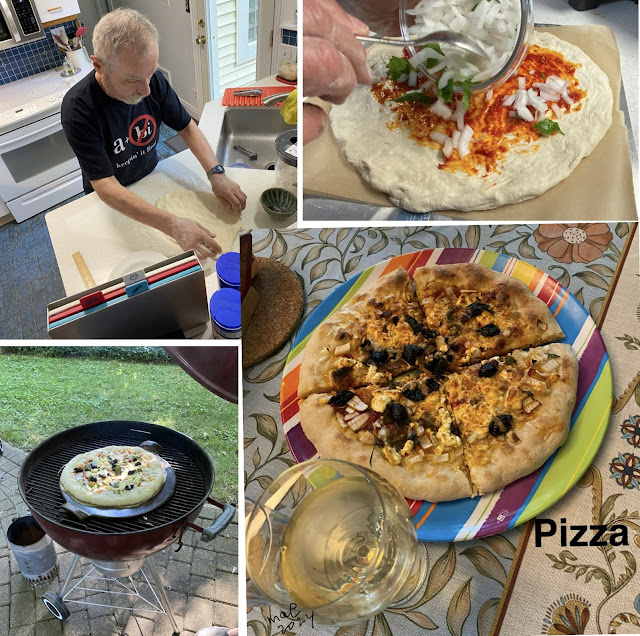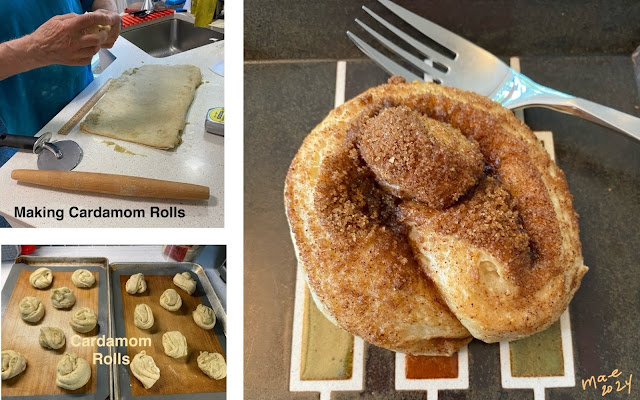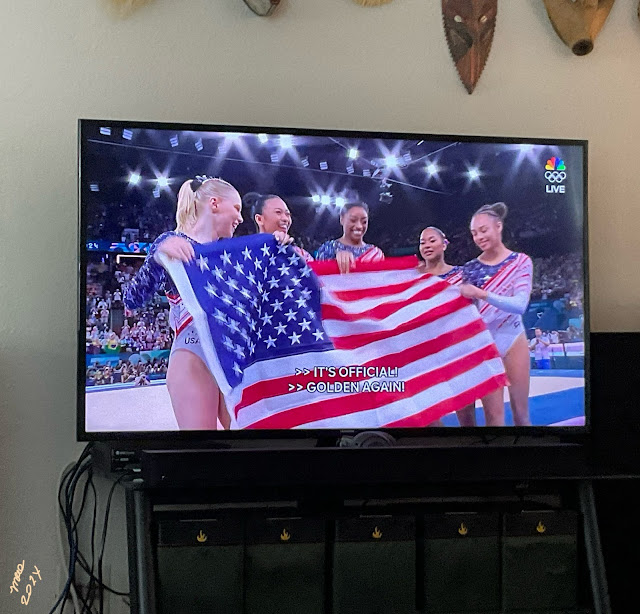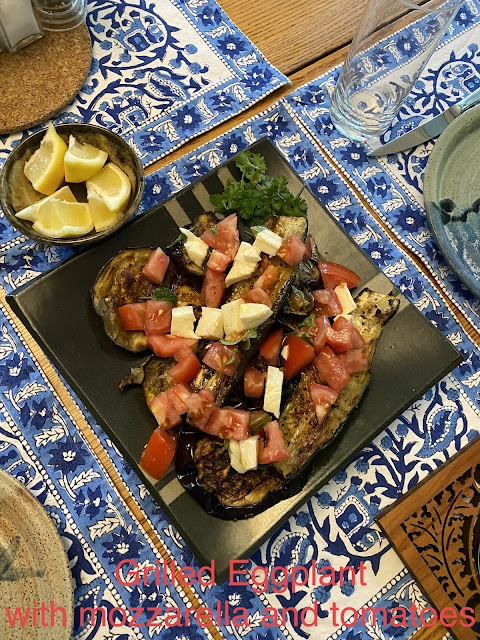 |
During the opening Olympic ceremony the athletes were transported in boats down the Seine River.
Along the river were numerous entertainments. This image shows a commemoration of the
French Revolution at the Conciergerie, a building that was of importance during the Revolution itself. |
This week it’s time for a wrap-up a blog event that I’ve been enjoying all month: Paris in July
Emma has done a fantastic job of organizing lists of all the posts. Now, for my final Paris post this July, I’ve interwoven many memories of Paris through the years. The inspiration for these memories comes from two sources: watching the Olympics on TV and reading The Years by Annie Ernaux.
Watching the Olympics and Reading a Book
The Olympic opening ceremony last Friday included references to many French cultural events, as well as entertainments honoring many great women and men. Among them of course were athletes, especially previous Olympic champions, and the two earlier Paris Olympic Games in 1900 and 1924. But also included were many examples of both popular culture and fine art — anything from Mona Lisa to Edith Piaf.
I had many moments of recognition as I watched the ceremony, and I enjoyed these memories. By coincidence, I had just begun to read the book
The Years by Annie Ernaux (published in French in 2008) — a book of memories of France during Ernaux’s long life, beginning when she was an infant during World War II. As I read, I often thought about the televised scenes along the Seine where the Olympic opening was set — a remarkable Paris spectacle that I watched for its entire four hour duration.
The memories invoked by the Olympics were not at all the same type of experiences as those described by Ernaux. Above all, her memories deal with the story of a girl growing up and learning what it means to be a woman, including intimate memories of her own body and her relationships with others, especially boys and later men. Relationships with family and friends, eventually marrying and having children …. not at all like the entertaining pageants incorporating the most famous of Paris monuments along the ceremonial route down the Seine. Despite the many differences, Ernaux’ interactions with popular culture throughout her life seem to me very connected with the Olympic ceremony’s spectacular musical numbers and visual reenactments of history. And her repeated descriptions of her life as a consumer and a shopper particularly seemed apt — a middle class consumer life: maybe the opposite of the showy wealth of the Olympic costumed performances.
Ernaux’s family’s memory of World War II (when she was an infant) and of other events and wars weren’t necessarily present at the Olympic ceremony, though there were echoes of French colonial and other wars if you knew to watch for them. Such different thoughts in such different media!
Both the book and the ceremony, in their totally different styles, brought back my own appreciation of Paris, of France, and of French culture over a life almost as long as hers. It seemed as if all these images were flashing before me with one set of memories reinforcing and complementing the other. Memories triggered by both the book and the TV became more and more vivid as I read and as I watched.
A Few Moments from the Olympic Ceremony
 |
French patriotism and French history were a strong element in the incredible opening ceremony.
Annie Ernaux’s memories of World War II, the final battles of the French war in Vietnam, the rise of
DeGaulle’s leadership in the post-World War II era, and the Algerian war all featured in her memories and are implied by the patriotic and military displays of the ceremony. |
 |
On a lighter note: Lady Gaga’s tribute to French music included a group of dancers doing
the CanCan, celebrating one of the attractions for which Paris was famous. |
 |
Aya sings at the Olympic Ceremony in front of the Académie Française |
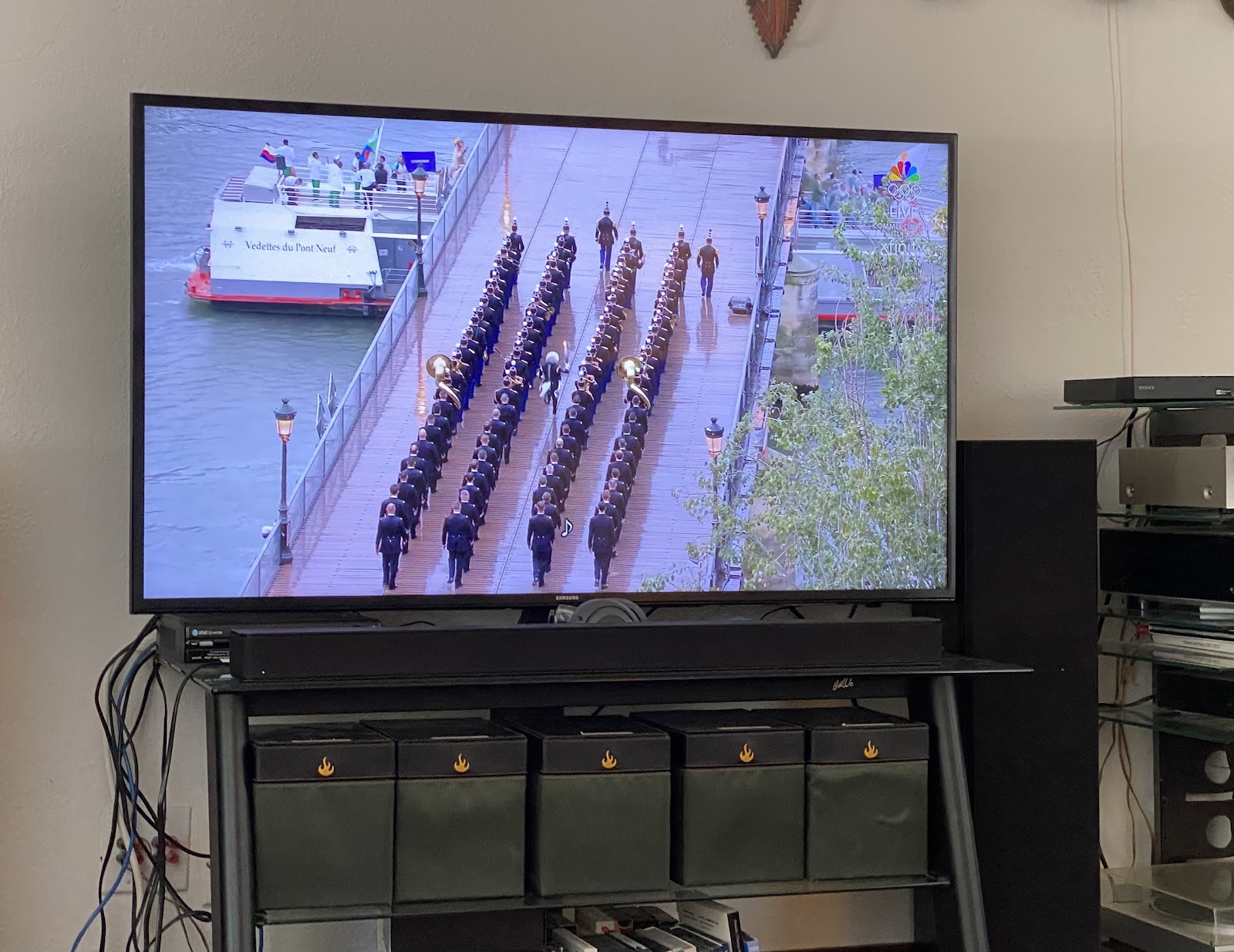 |
| The Republican Guard accompanied Aya. |
Aya, currently the most-streamed singer from France, performed some of her own original music. She was accompanied by the musicians of the French Republican Guard, a government institution since 1848, and known for the fact that some of its members were loyal to DeGaulle in World War II (that is, they fought against the Nazis). As part of this performance, this orchestra also played Charles Aznavour's "For Me Formidable." Of course Annie Ernaux mentions Aznavour (1924-2018), who was an icon of French music, among her memories of the past. Aya represents the present.
In fact, Aya’s participation in the ceremony has importance in redefining what it means to be French. Op-ed writer
Roger Cohen in the New York Times wrote this: “When Aya Nakamura, a French Malian singer, came sashaying in a short fringed golden dress out of the august Académie Française, she redefined Frenchness. Adieu the stern edicts of the Académie, whose role has been to protect the French language from what one of its members once called ‘brainless Globish.’ Bonjour to a France whose language is
increasingly infused with expressions from its former African colonies that form the lyrical texture of Ms. Nakamura’s many blockbuster hits.”
Life is always changing. Identity changes. Culture changes. Memories have to adapt to this. As I project my own memories of France into what I saw in the Olympic ceremony, and as I compare to the lifetime of memories in Annie Ernaux’ book, I feel it’s necessary also to see how things are changing.
 |
French Olympic athletes from the past carry the Olympic flame to the huge symbolic torch.
One of many tributes to French experiences and famous people from the past.
We happened to be living in Paris during one Olympics and I recall watching the games on French TV. |
 |
As the final performance at the opening ceremonies, Celine Dion sang a song that represented
the lasting memory of the famous French singer Edith Piaf (1915-1963)
|
From The Years: one of many memories from Annie Ernaux’s choice of music in her adolescent years — “… when, in the tiny island of her bedroom, she listened to Sidney Bechet, Edith Piaf, and the 33 rpms ordered from the Concert Hall Record Club.” (p. 60). Ernaux directly mentions Piaf once or twice; in fact, many people, not just French people, have never forgotten her songs. Dion’s choice was Piaf’s “L’Hymne à l’amour” (“Hymn to Love”), of which Piaf composed the lyrics and sang dramatically. Of course the personal story of Dion’s health struggles, which have kept her from performing for the last four years, made this a deeply emotional moment, perfectly embodied in this deeply emotional song.
Contrast: Ernaux describes the clothing she wore. In childhood, it was the clothing of a poor and socially disadvantaged child. In later years she recalled the clothing trends of the young, hip, and rebellious youth of the 1960s, and eventually the clothing she wore as a teacher, who was a woman becoming recognized for her work. In contrast — the Olympic ceremony’s use of clothing was to make an insanely extravagant statement of wealth and opulence!
Contrast: Ernaux shares political observations defining her views of ideologies, politicians, elections, and civic commitments. The politics of the Olympic ceremony, in contrast, are about power and glory, and one can’t miss the significance of the “dignitaries” in a place of honor. Much of the Olympic politics are unspoken. Seeing this, I feel as if I’m receiving a subliminal message about French glory.
In Sum…
Annie Ernaux’s life as she presents it, one memory at a time, was lived in the aura of many French national experiences, particularly including the youth rebellion of May, 1968, and the changes in attitudes and social norms that followed. We remember witnessing the result of these monumental events as they changed the lives of several close friends — perfectly described in The Years. Effectively, this book is a memoir of the twentieth century, and our century involves much that’s new.
Each time we visited France (or lived there for a while) we were aware of many of the cultural trends she describes. At home, we had many of the same experiences that she had: lots of the same music and films she mentioned were popular here in the USA. For example, the first time I heard a Beatles song it was being played in a cafe in a small town in France in the 1960s.
While the impersonal patriotic history and blander popular culture expressed in the Olympic ceremony is very different from Ernaux’ lived experience, I find all these memories — and also the new realities — pretty amazing and remarkably familiar.
 |
| The end of the ceremony. The beginning of the games… |
 |
| No more nostalgia: watching women’s gymnastics and the unbelievable Simone Biles. |
 |
| Also watched kayaking. |
Review © 2024 mae sander

